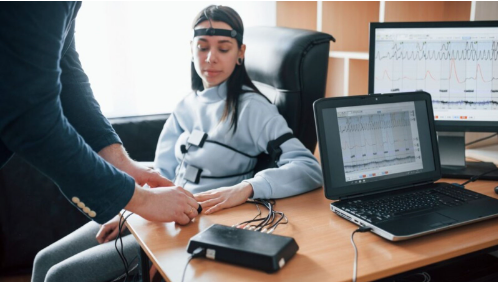Sex offender registration and management is critical in reforming previous offenders and minimizing reoffences.
In the United States, the law requires all convicted sex offenders to be officially registered prior to their release into the community. Registration allows criminal justice professionals to keep an updated record of the offenders’ identities, addresses, and criminal profiles.
Further, sex offenders must be closely monitored to track their progress within their respective communities. A huge part of that monitoring process requires periodical examinations, many of which are now conducted using polygraph tests.
But are lie detectors effective tools for managing sex offender compliance? Let’s find out.

The Role of Polygraphs in Monitoring Prohibited Behaviors
Each offender is unique. While correctional facilities are designed to reform convicts by discouraging aberrant behaviors, not everyone walks out of prison as a changed person. In fact, many get off more depraved than when they came in.
Every criminal justice officer hopes that convicted sex offenders walk out of jail fully (or, at least, mostly) reformed. But because most convicts won’t overtly reveal their following move, the surest way to rule out future reoffences is to administer a polygraph test.
In many legal jurisdictions across the US, administering periodic lie detector tests to paroled sex offenders is critical, for it provides assurances that the individual no longer poses a severe threat to the communities they’re being released into.
A polygraph test analyzes various psychological and physiological responses associated with lying. These include elevated heart rate, abnormal brain waves, involuntary muscle twitching, irregular blinking, and intense perspiration.
Usually, an examiner will ask objective questions and hope the sex offender is honest and forthright. The questions may vary in complexity and even span multiple topics besides sexual violence. However, they shouldn’t be self-incriminating or dwell on the past offense. Asking highly subjective questions may drive a genuinely reformed sex offender over the edge, potentially falsifying the polygraph results.
Thereafter, a polygraph examiner will analyze the responses to determine if a convicted sex offender is keeping up with their parole terms. Results from a lie detector examination will also inform appropriate surveillance levels and treatment course.

The Role of Polygraph Tests in Modifying Sex Offender Therapy
Typically, periodic lie detector examinations are conducted to evaluate a sex offender’s continued compliance with supervision and treatment conditions.
The assessments may seek to establish whether the sex offender has:
- Complied with their no-contact order
- Reported regularly to their supervising officers
- Lived within the geographical limits defined in their parole terms
- Had major routine changes and, if yes, has notified their supervising officer
- Committed any offenses, particularly sexual assaults, during their parole
But contrary to popular misconception, administering polygraph tests to paroled sex offenders isn’t merely intended to uncover deception. These evaluations are also critical in prescribing appropriate therapies for the probationer.
Conducting periodic lie detector examinations helps assess the impact of current treatment plans. If these tests uncover inefficiencies in the therapy program, the parole officer will recommend redesigning the treatment plan to align it with the individual’s needs.
Parole officers may also rely on polygraph results to modify supervision levels. If the tests reveal glaring deviations from the parole conditions or provide other hints of high-risk behavior, the probation officer may recommend a new treatment plan altogether.
Significance of a Collaborative Approach
The legal admissibility of polygraph tests has always been a matter of intense debate due to emerging ethical issues. To conduct a valid lie detector examination, a collaborative approach is paramount.
First, the parolee must consent to a polygraph examination and prepare themselves psychologically for it.
Note that the Fifth Amendment of the U.S. Constitution safeguards citizens against forced self-incrimination. As such, it will take a professional polygraph examiner to have a sex offender waive confidentiality and potentially reveal intimate details regarding their sex history.
Besides, polygraph examiners should collaborate with probation officers when designing appropriate questions to ask the sex offender. Since reformation is the primary goal, questions should focus on establishing gaps in the parolee’s current treatment plan.
Pre- and post-examination interviews, as well as constant reference to the sex offender’s criminal profile, may also be critical in improving the accuracy of subsequent polygraph tests.

Enforcing Compliance With Polygraph Tests
Lie detectors play a pivotal role in ensuring that convicted sex offenders comply with statutory obligations. Using results from polygraph tests, parole officers can determine whether previous sex offenders are on course to complete reformation or if they still pose a significant threat to their communities.
However, lie detectors are often subjected to intense legal and ethical scrutiny. The examinee must provide their unequivocal consent to taking a polygraph exam for any test results to be deemed valid.
More importantly, the outcome of a lie detector test alone might not offer credible hints on a sex offender’s compliance. You’ll need to rely on other crucial resources, such as the individual’s criminal and psychological history.






